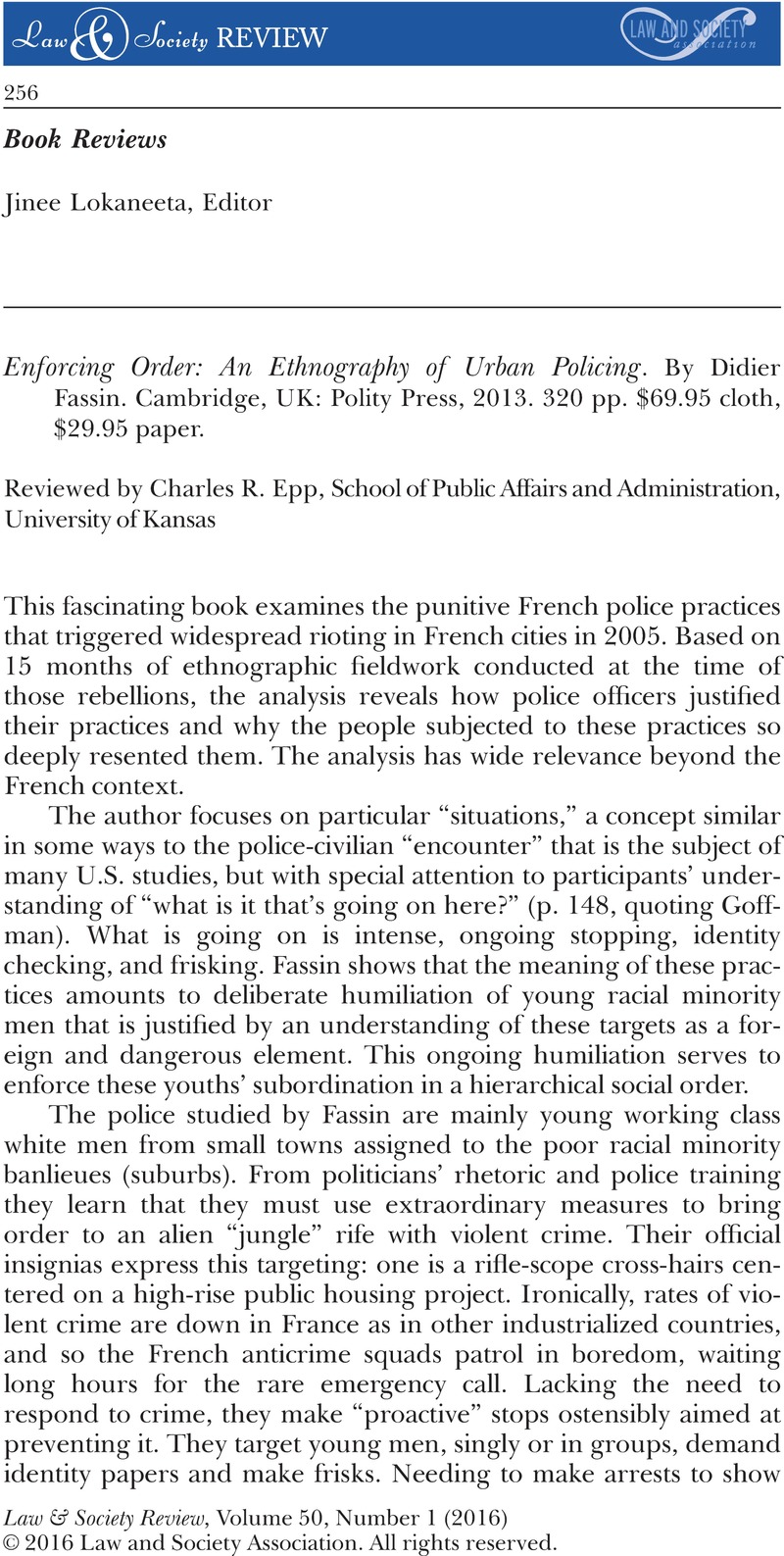No CrossRef data available.
Article contents
Enforcing Order: An Ethnography of Urban Policing. By Didier Fassin. Cambridge, UK: Polity Press, 2013. 320 pp. $69.95 cloth, $29.95 paper.
Review products
Enforcing Order: An Ethnography of Urban Policing. By Didier Fassin. Cambridge, UK: Polity Press, 2013. 320 pp. $69.95 cloth, $29.95 paper.
Published online by Cambridge University Press: 01 January 2024
Abstract
An abstract is not available for this content so a preview has been provided. Please use the Get access link above for information on how to access this content.

Information
- Type
- Book Reviews
- Information
- Copyright
- © 2016 Law and Society Association.

